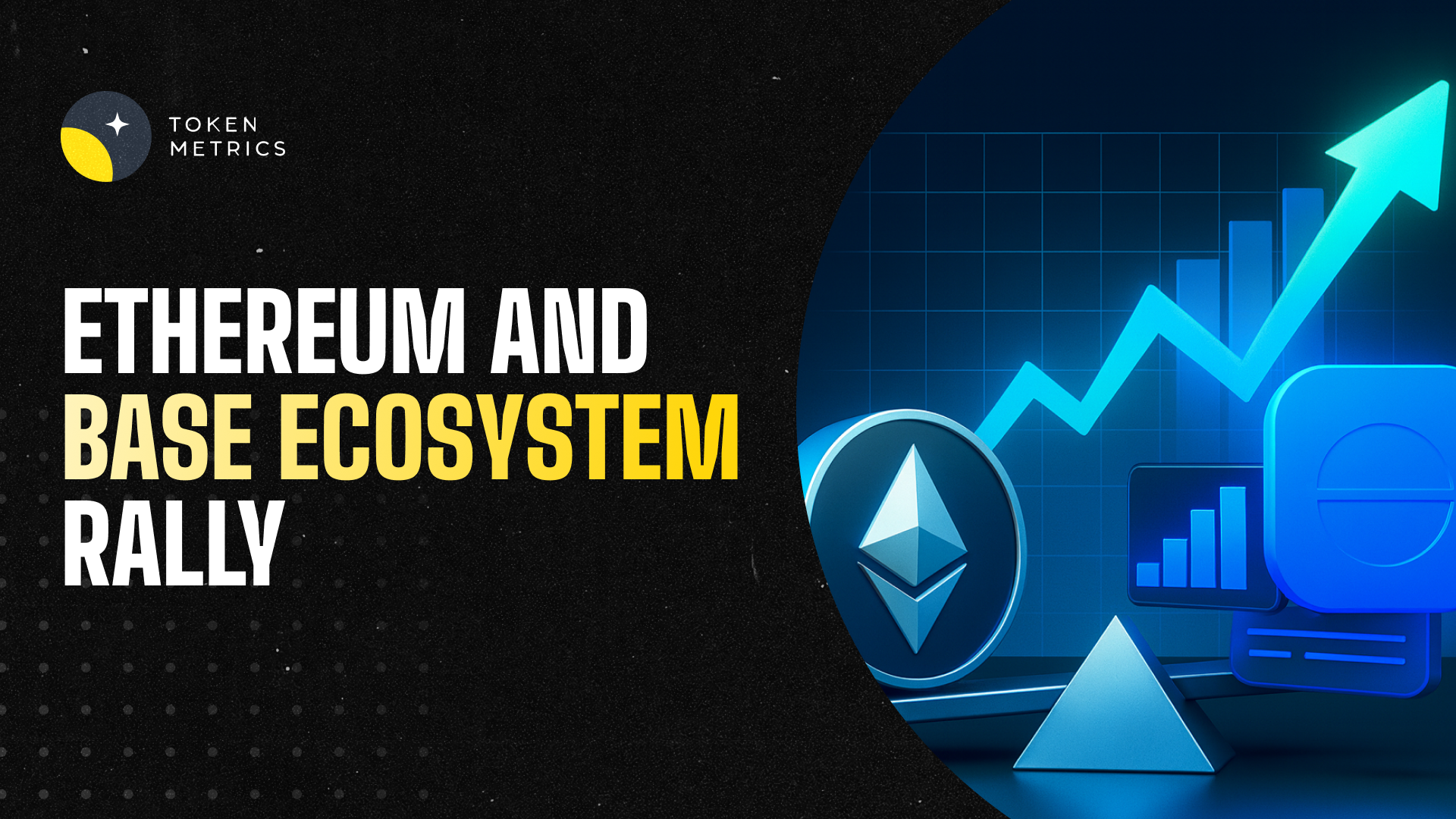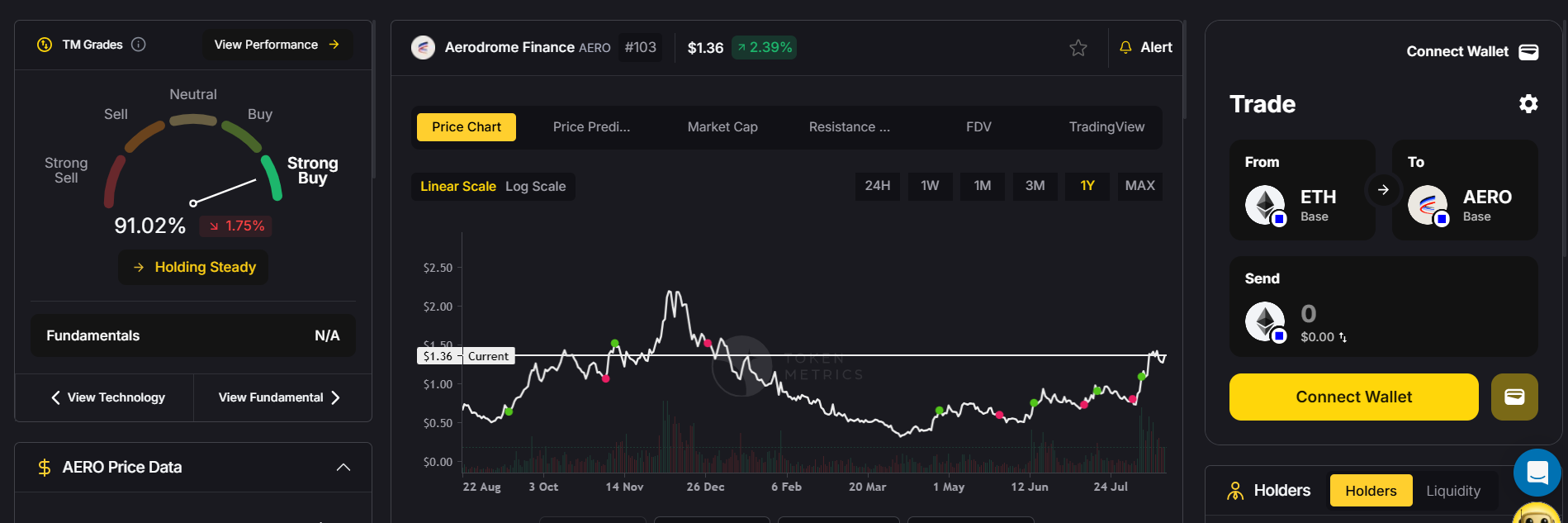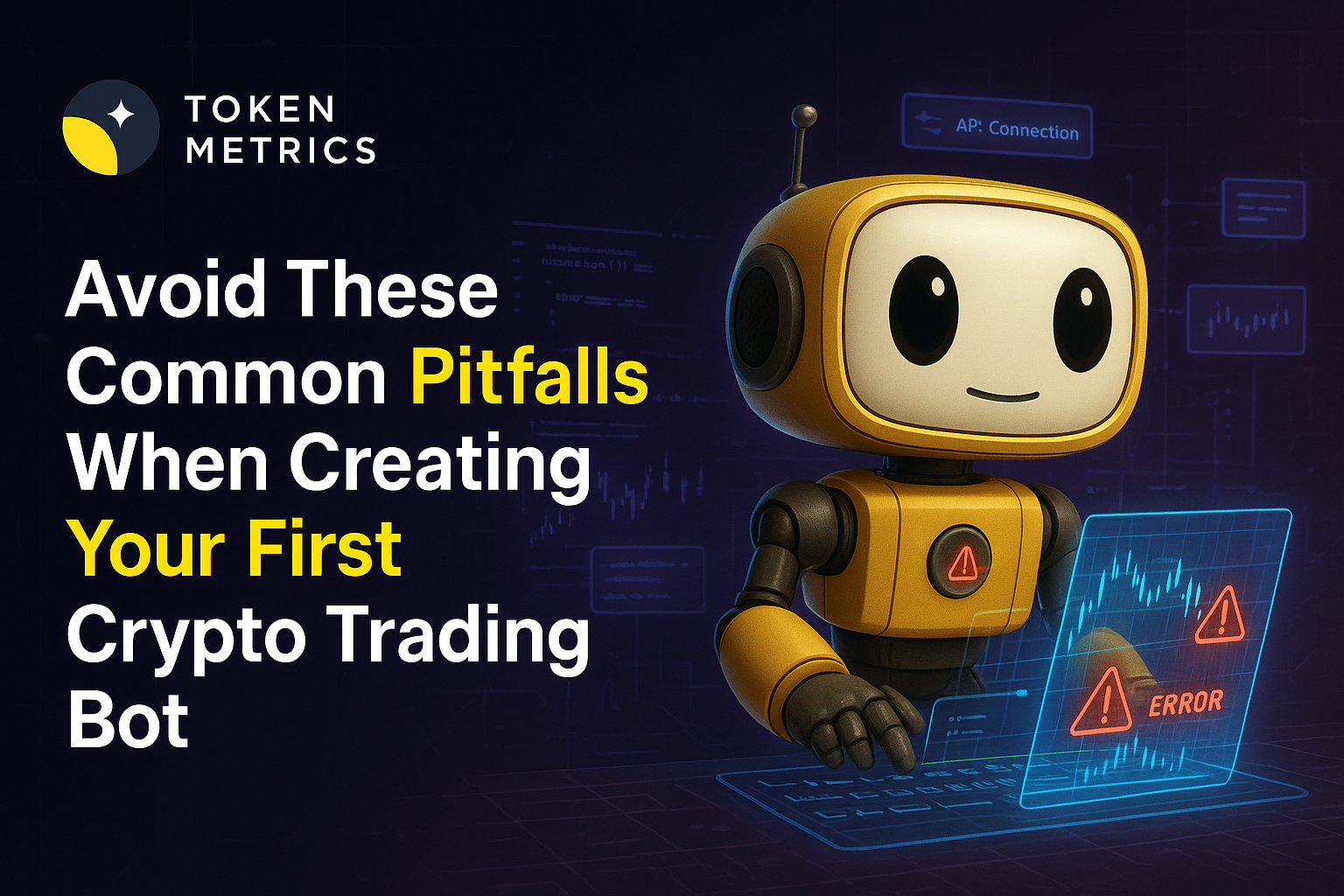
Building Retirement Wealth with Token Metrics Crypto Indices: A Long-Term Investment Strategy for Financial Freedom

Most cryptocurrency content focuses on quick profits, overnight riches, and short-term trading gains. This creates the misconception that crypto exists solely for speculation rather than serious wealth building. The reality? Cryptocurrency represents one of the most powerful tools available for long-term retirement planning when approached with discipline and proper strategy.
Token Metrics AI Indices provide the framework for incorporating cryptocurrency into retirement portfolios intelligently. Rather than gambling on individual tokens or timing markets perfectly, systematic index investing builds wealth gradually over decades through compound growth, professional management, and strategic diversification.
This comprehensive guide explores how to use crypto indices for retirement planning, comparing traditional retirement vehicles to crypto options, calculating realistic retirement scenarios, and building multi-decade investment strategies that could transform your financial future.
Why Crypto Indices Belong in Retirement Portfolios
Traditional retirement planning relies on stocks, bonds, and real estate. Adding cryptocurrency exposure enhances portfolios through several key mechanisms:
- Superior Growth Potential: Historical crypto returns significantly exceed traditional assets over multi-year periods. Even if future returns moderate, achieving 30-50% annualized returns would dramatically impact retirement wealth.
- Diversification Benefits: Cryptocurrency often moves independently from traditional assets, providing genuine diversification that smooths portfolio returns over time.
- Inflation Protection: Fixed supply schedules make many cryptocurrencies potential inflation hedges, crucial for 20-40 year retirement planning horizons.
- Accessibility: Unlike real estate or certain restricted investments, cryptocurrency provides accessible exposure regardless of location or wealth level.
A $10,000 investment growing at 40% annually becomes $289,000 in 10 years and over $8 million in 20 years, compared to traditional 8-10% returns producing $46,000-67,000 in 20 years.
Crypto Index Retirement Strategies by Age
Appropriate cryptocurrency allocation varies dramatically based on age and time until retirement. Here's how to structure crypto index exposure across different life stages.
Ages 20-35: Maximum Growth Phase
Young investors possess retirement timelines of 30-45 years, allowing aggressive crypto allocation with time to recover from potential downturns.
- Target Allocation: 20-30% of total investment portfolio in crypto indices
- Index Selection: 50% aggressive growth indices, 30% balanced indices, 20% conservative indices
- Strategy: Maximum growth through high-risk/high-reward positioning with gradual shift toward stability as you age
At this age, even 80% portfolio declines during severe bear markets can be recovered within 5-10 years through continued contributions and market recovery. The extraordinary upside potential of aggressive crypto indices justifies accepting higher volatility.
Dollar-cost average aggressively during this phase. Invest consistently whether markets surge or crash—time in market beats timing the market over multi-decade horizons. A disciplined 25-year-old investing $500 monthly in crypto indices could accumulate millions by retirement.
Ages 35-50: Balanced Growth Phase
Mid-career professionals have 15-30 years until retirement, requiring balance between growth and preservation.
- Target Allocation: 10-20% of portfolio in crypto indices
- Index Selection: 30% aggressive growth, 50% balanced indices, 20% conservative indices
- Strategy: Maintain growth exposure while gradually reducing volatility through balanced allocations
This age bracket still allows recovery from market downturns but requires more caution. Your portfolio has grown substantially through career earnings and investment gains—protecting accumulated wealth becomes increasingly important while maintaining growth exposure.
Continue regular contributions but consider taking partial profits during euphoric market conditions to rebalance back to target allocations. This systematic profit-taking locks in gains while maintaining disciplined exposure.
Ages 50-60: Capital Preservation with Growth
Pre-retirement investors have 5-15 years until retirement, requiring capital preservation focus while maintaining some growth exposure.
- Target Allocation: 5-10% of portfolio in crypto indices
- Index Selection: 10% aggressive growth, 30% balanced indices, 60% conservative indices
- Strategy: Emphasize established cryptocurrencies through conservative indices while maintaining modest growth exposure
Near-retirement portfolio declines prove difficult to recover before accessing funds. Conservative crypto indices focusing on Bitcoin, Ethereum, and fundamentally strong large-caps provide continued growth potential with substantially reduced volatility compared to aggressive indices.
This phase should involve gradually reducing crypto allocation through systematic profit-taking if positions have appreciated significantly. Lock in life-changing gains rather than risking everything on continued appreciation.
Ages 60+: Income and Preservation
Retirees and near-retirees require income generation and capital preservation, making crypto allocation more cautious.
- Target Allocation: 3-5% of portfolio in crypto indices maximum
- Index Selection: 100% conservative indices emphasizing established assets
- Strategy: Preserve accumulated wealth while maintaining modest crypto exposure for continued growth and inflation protection
At this stage, crypto serves primarily as portfolio diversifier and inflation hedge rather than primary growth driver. Conservative indices provide stability while avoiding volatility that could disrupt retirement cash flow needs.
Consider this allocation as "money you won't need for 10+ years" even in retirement. Maintain traditional income-generating assets for living expenses while crypto serves as long-term appreciation component.
Tax-Advantaged Crypto Retirement Investing
The most powerful retirement investing occurs in tax-advantaged accounts where compound growth accelerates without annual tax drag.
- Traditional IRA Crypto: Contributions may be tax-deductible. Crypto appreciation grows tax-deferred until retirement withdrawals, dramatically accelerating wealth accumulation.
- Roth IRA Crypto: Contributions aren't tax-deductible but all future gains—including crypto appreciation—are tax-free if withdrawn after age 59½. Imagine 1000%+ gains completely tax-free.
- Tax-Loss Harvesting: In taxable accounts, sell positions at losses to offset gains, reducing tax liability. Crypto currently isn't subject to wash-sale rules, allowing aggressive optimization.
- 401(k) Options: Some plans now include crypto-related options. Contribute enough to maximize employer match, then open self-directed IRA for crypto indices.
Calculating Your Crypto Retirement Scenarios
Understanding how crypto indices could impact your retirement requires running realistic projections based on various return scenarios.
Conservative Scenario: 20% Annualized Returns
If crypto indices deliver 20% annualized returns—substantially below historical performance but conservative for mature markets—the impact on retirement wealth remains significant.
Example: $10,000 initial investment with $500 monthly contributions over 30 years at 20% annual returns grows to approximately $2.8 million. The same contributions at traditional 8% returns grow to $680,000. The additional $2.1 million from crypto allocation transforms retirement completely.
Moderate Scenario: 35% Annualized Returns
If crypto indices achieve 35% annualized returns—possible given historical performance and continued sector growth—wealth accumulation accelerates dramatically.
Example: Same $10,000 initial investment with $500 monthly contributions over 30 years at 35% returns grows to approximately $18.5 million. This level of wealth provides complete financial freedom and generational wealth transfer opportunities.
Aggressive Scenario: 50% Annualized Returns
If crypto indices deliver 50% annualized returns—achievable during optimal conditions though not guaranteed—retirement wealth reaches extraordinary levels.
Example: $10,000 initial with $500 monthly over 30 years at 50% returns produces approximately $86 million. While this scenario seems unrealistic, early cryptocurrency adopters achieved even higher returns.
Reality Check: Averaging Across Market Cycles
Real returns won't be linear—expect bull markets delivering 200-500% returns alternating with bear markets producing 50-80% drawdowns. Over complete cycles, conservative average returns of 25-40% annually seem reasonable for diversified crypto index exposure.
These projections illustrate why even small crypto allocations dramatically impact long-term retirement wealth. A 10% crypto allocation returning 30% annually while 90% traditional assets return 8% produces blended portfolio returns of 10.2%—significantly enhancing retirement outcomes.
Managing Crypto Volatility in Retirement Planning
Cryptocurrency's volatility creates legitimate concerns for retirement investors. Managing this volatility while capturing growth requires specific strategies.
Time-Based Allocation Adjustment
Gradually reduce crypto allocation as retirement approaches through systematic rebalancing. This glide path approach—similar to target-date retirement funds—reduces volatility exposure as time horizon shortens.
Start with higher allocations (15-25%) in your 20s-30s, gradually reducing to 10-15% in 40s, 5-10% in 50s, and 3-5% in retirement. This systematic reduction locks in gains while managing risk appropriately for age.
Rebalancing Discipline
Set specific portfolio allocation targets and rebalance quarterly or annually. When crypto appreciates significantly beyond target allocation, sell portions to rebalance back. When crypto declines below target, add to positions during market weakness.
This mechanical rebalancing forces buying low and selling high—the opposite of emotional investing. Over decades, disciplined rebalancing dramatically improves risk-adjusted returns.
Emergency Fund Separation
Never invest emergency funds or money needed within 5 years in cryptocurrency. Maintain 6-12 months expenses in cash or stable value accounts separate from crypto allocation. This ensures market volatility doesn't force selling during downturns.
Retirement planning works best when crypto represents "money you won't need for 10+ years." This timeframe allows riding out market cycles without forced selling during temporary declines.
Dollar-Cost Averaging Forever
Continue systematic contributions regardless of market conditions. Dollar-cost averaging reduces timing risk and smooths out entry prices across bull and bear markets. The worst-performing investment strategy is investing large sums at market tops—DCA prevents this mistake.
Set up automatic monthly or bi-weekly investments and maintain through all market conditions. Over 20-30 year retirement timelines, consistent DCA produces exceptional results even if individual timing proves poor.
Building Your Multi-Decade Crypto Index Retirement Plan
Creating an effective long-term strategy requires comprehensive planning addressing allocation, execution, adjustment, and monitoring.
Phase 1: Foundation Building (Years 1-5)
- Establish clear retirement goals and timeline
- Determine appropriate crypto allocation based on age and risk tolerance
- Open necessary accounts (self-directed IRA, taxable brokerage, exchange accounts)
- Begin dollar-cost averaging into chosen Token Metrics indices
- Set up automatic monthly contributions to maintain discipline
Focus this phase on building foundational positions and establishing sustainable contribution habits. Don't obsess over short-term performance—focus on consistency.
Phase 2: Accumulation Acceleration (Years 6-15)
- Maximize contribution rates as income grows through career advancement
- Implement tax-loss harvesting strategies in taxable accounts
- Begin systematic rebalancing to maintain target allocations
- Take partial profits during euphoric markets to lock in gains
- Continuously educate yourself about crypto markets and blockchain technology
This phase typically coincides with peak earning years. Maximize the power of compound growth by contributing aggressively while maintaining disciplined rebalancing.
Phase 3: Pre-Retirement Transition (Years 16-25)
- Gradually reduce crypto allocation through systematic profit-taking
- Shift remaining crypto exposure toward conservative indices
- Lock in life-changing gains rather than risking everything on continued appreciation
- Develop retirement withdrawal strategy accounting for crypto volatility
- Consider converting taxable crypto holdings to Roth IRA if tax-efficient
As retirement approaches, capital preservation becomes increasingly important. Take chips off the table while maintaining some exposure for continued growth and inflation protection.
Phase 4: Retirement Distribution (Years 26+)
- Maintain 3-5% crypto allocation for growth and inflation protection
- Withdraw from traditional assets first, allowing crypto to compound longer
- Rebalance annually to maintain target allocations
- Consider crypto allocation as "legacy wealth" for heirs
- Monitor but don't obsess over short-term volatility
In retirement, crypto serves as long-term growth component rather than primary income source. Spend traditional assets while crypto appreciates, potentially leaving substantial wealth for heirs.
Conclusion: Transforming Retirement Through Strategic Crypto Allocation
Retirement planning with cryptocurrency doesn't require speculation, perfect timing, or excessive risk-taking. Token Metrics AI Indices provide systematic, professional, diversified exposure allowing disciplined long-term wealth building.
The choice is stark: maintain 100% traditional asset allocation and likely achieve comfortable but conventional retirement, or incorporate strategic crypto allocation potentially transforming retirement wealth completely. Even conservative 5-10% crypto allocations dramatically enhance retirement outcomes over multi-decade horizons.
Your advantage is time. Compound growth over 20-40 years turns modest contributions into life-changing wealth. Crypto's superior growth potential—even if moderated from historical levels—provides retirement enhancement unavailable through traditional assets alone.
The risks are manageable through proper allocation, diversification, and disciplined rebalancing. The opportunity cost of complete avoidance grows with every passing year. Markets won't wait for perfect confidence—they reward those who begin with imperfect action.
Token Metrics provides the tools, strategy, and professional management transforming crypto from speculation into serious retirement planning. Your future self will thank you for making strategic allocation decisions today rather than watching opportunities pass from the sidelines.
Start your 7-day free trial today and begin building the retirement you deserve through systematic, professional crypto index investing. Financial freedom awaits those willing to embrace opportunity with discipline and strategy.

.svg)

Create Your Free Token Metrics Account

.png)




%201.svg)
%201.svg)


%201.svg)












.svg)




.png)